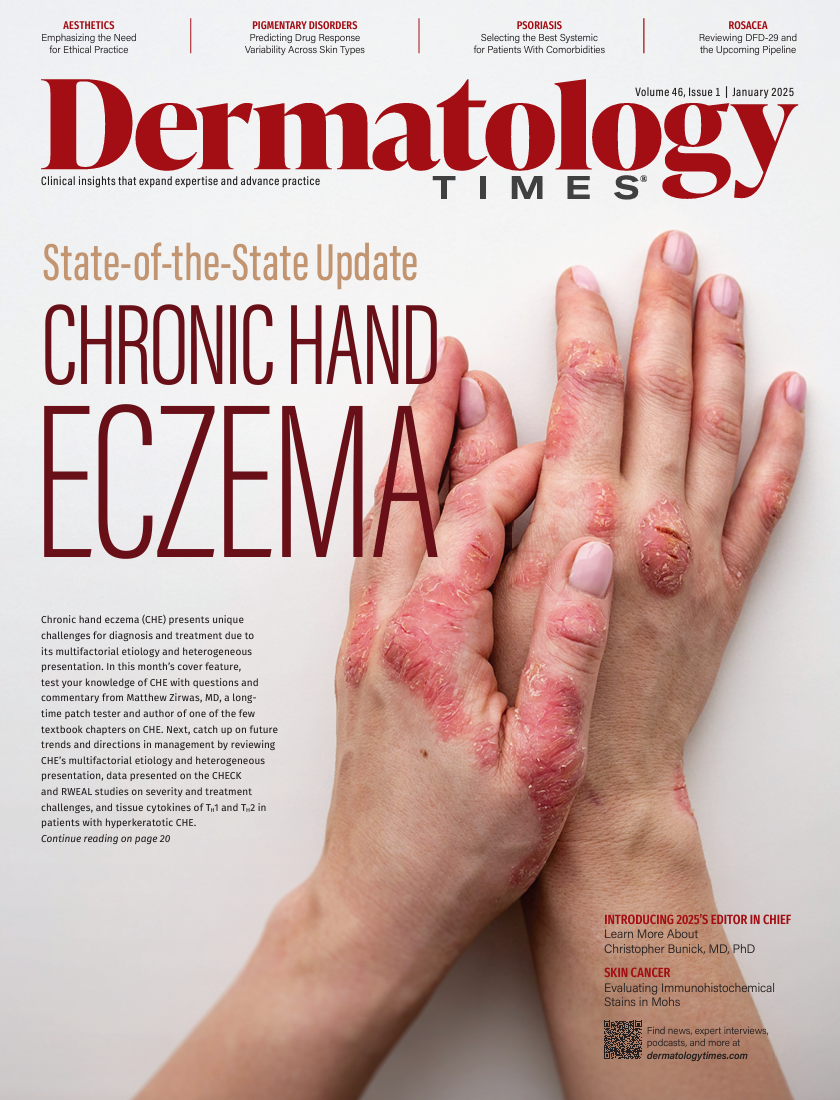- Acne
- Actinic Keratosis
- Aesthetics
- Alopecia
- Atopic Dermatitis
- Buy-and-Bill
- COVID-19
- Case-Based Roundtable
- Chronic Hand Eczema
- Chronic Spontaneous Urticaria
- Drug Watch
- Eczema
- General Dermatology
- Hidradenitis Suppurativa
- Melasma
- NP and PA
- Pediatric Dermatology
- Pigmentary Disorders
- Practice Management
- Precision Medicine and Biologics
- Prurigo Nodularis
- Psoriasis
- Psoriatic Arthritis
- Rare Disease
- Rosacea
- Skin Cancer
- Vitiligo
- Wound Care
News
Article
Dermatology Times
TikTok Hair Trends Explained
Author(s):
Key Takeaways
- Jell-O hair coloring provides vivid, temporary colors using gelatin, ideal for porous hair, and is less damaging than traditional dyes.
- Balayage, ombré, and sombré techniques offer artistic, low-maintenance hair coloring options, with hand-applied dyes creating custom looks.
Explore TikTok hair trends like Jell-O coloring, balayage, ombré, and digital perms, explained by expert Zoe Diana Draelos, MD.
Hair care IS without a doubt the trendiest of all areas of dermatology! Because hair is nonliving, it does not fall under any governmental regulation, so creativity is the name of the game, and the wilder the better. However, the rapidly changing hair care market is important to the dermatologist, because we are indeed the hair experts. To keep you abreast of hair care trends, I have examined 3 of the most popular hair care ideas for 2025.
Image Credit: © deagreez - stock.adobe.com

Trend 1: Jell-O Hair Coloring
Have you ever wanted lemon yellow or orange hair? If so, Jell-O hair coloring is for you. You can dye your hair any color, but the colors are more vivid on lightly pigmented hair. The more porous the hair shaft, the deeper the color. So, previously chemically processed hair will hold the color up to 5 weeks, but untreated hair will lose the color more quickly.
This technique utilizes 2 boxes of powdered gelatin in the desired color, thick hair conditioner, and petroleum jelly. The 2 boxes of gelatin are mixed with the thick hair conditioner to create a paste. The petroleum jelly is put around the area for dyeing so the skin and surrounding hair are not also dyed. The hair is divided into 4 sections and held back with clips. The mixture is spread over the hair with a brush and then covered with a shower cap. The shower cap will trap heat from the body and allow the gelatin to penetrate more deeply into the hair shafts. The gelatin must be left on the hair for 1 hour but may be left on longer for bolder color. The mixture is then rinsed out with lukewarm water. Shampooing should be avoided following initial hair coloring or the color will be removed. The hair can then be dried and styled as usual.
If the hair color requires removal, it can be easily shampooed away with a clarifying or deep-cleaning shampoo. The gelatin color is not fast, so it can discolor towels and pillowcases after dyeing. It is an inexpensive way to dye hair that does not damage the hair shaft as much as traditional semipermanent or permanent dyes.
Trend 2: New Hair Coloring Combinations: Balayage, Ombré, and Sombré
The artful combination of different color permanent hair dyes to create a fashion statement is enjoying renewed popularity. The first introduction of this technique was called frosting whereby the ends of brunette hair were selectively bleached blonde by pulling the hair through a cap with holes. Highlighting was popularized next, which involved applying bleach to selective strands of hair to enhance hair texture. If the selectively bleached strands were placed in aluminum foil to protect the surrounding hair from also contacting the bleach, the technique was known as foiling.
Variations of this technique include balayage, ombré, and sombré, which are most frequently utilized on longer tresses. Balayage, which is a French word meaning “to sweep,” utilizes a slightly lighter dye color that is placed on the hair by hand in sections. It creates the look of grown-out hair and thus does not need to be redyed as rapidly as other dyeing techniques. The hand application of the dye creates a more custom look, which is preferred, but does not cover gray hair. Ombré, which means “shaded” in French, leaves the hair darker at the roots with progressive lighting toward the distal hair shaft. Finally, sombré is a softer version of ombré where the hair is darker at the roots and lighter at the distal hair shaft, but only by 1 or 2 shades.
Trend 3: Digital Perms
Permanent waving of the hair utilizes a thioglycolate solution to break the disulfide bonds in straight hair, which are then reformed when the hair is wrapped around a cylinder, known as a perming rod. The unique aspect of a digital perm is that the perming rods are heated and the heat from within the rods is used to process the permanent wave. The temperature can be modified to create different curl tightness in addition to modifying the diameter of the rods. Digital perms produce more relaxed curls and waves in the hair. The cost for such a procedure is around $200 to $300.
Zoe Diana Draelos, MD, is a consulting professor of dermatology at Duke University School of Medicine in Durham, North Carolina, and Dermatology Times’ Editor in Chief Emeritus.

Newsletter
Like what you’re reading? Subscribe to Dermatology Times for weekly updates on therapies, innovations, and real-world practice tips.


























